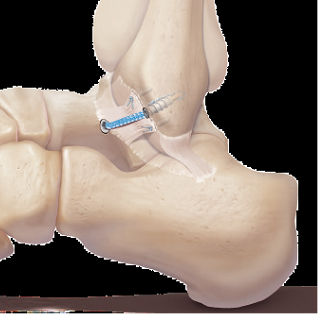Surgery for Ankle Instability
Book a free Intro call today to discuss your treatment options for Ankle Instability
What does the surgery for Ankle Instability involve?

What does rehabilitation for Ankle Instability involve?
Day case or 1 night in hospital
Phase 1 Recovery 0-6 weeks: 2 weeks in a cast non weightbearing. At 2 weeks change into an aircast boot and begin full weightbearing and physiotherapy. The boot is worn for 6 weeks.
Phase 2 6 weeks to months: Wean off the boot. Physiotherapy: Improve strength and balance
Phase 3 Return to sport 3- 6 months
Phase 4 Prevention of recurrence Recovery is patient specific and the rate of progress through stages 2-4 will vary. A brace may be recommended for 6 months for certain sporting activities.
Frequently asked questions (FAQs) on surgery relating to Ankle Instability
When can I return to sport?
3- 6 months after surgery dependent on the level and what sport. A brace may be recommended for 6 months for certain sporting activities.
How long will I be off work?
Dependent upon the type of occupation: Seated job 2-3 weeks, Standing job 6-8 weeks, Heavy lifting job 8-12 weeks
When can I drive?
Manual car no driving for 6 weeks. Automatic car Left foot no driving for 2 weeks, Right foot no driving 6 weeks
What are the risks of the procedure?
General risks include infection and wound problems, nerve injury and scar sensitivity, blood clots to the leg/lung (DVT and PE) and anaesthetic problems.
Specific risks to lateral ligament reconstruction can include risk of ankle stiffness (uncommon). Recurrent instability can occur in of 5% of patients and usually occurs after another injury.
Kent’s Holistic Foot & Ankle specialists
The Sajid Shariff clinic is a private orthopaedic clinic based in SE London and Kent that specialises in surgical and non-surgical treatment of foot and ankle conditions including ankle instability, plantar fasciitis, ankle sprains, bunions and achilles tendonitis.
Keep an eye on the shape of your feet; if you see changes see a doctor to find out if there are any recommendations to prevent hallux valgus from forming

Use a variety of exercises to stretch your feet and calves

Try to avoid shoes that have a heel or pointed toe

